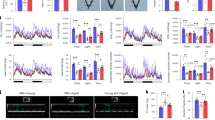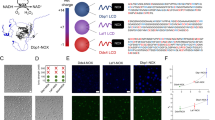Abstract
Superoxide is a reactive oxygen species produced during aerobic metabolism in mitochondria and prokaryotes. It causes damage to lipids, proteins and DNA and is implicated in cancer, cardiovascular disease, neurodegenerative disorders and aging. As protection, cells express soluble superoxide dismutases, disproportionating superoxide to oxygen and hydrogen peroxide. Here, we describe a membrane-bound enzyme that directly oxidizes superoxide and funnels the sequestered electrons to ubiquinone in a diffusion-limited reaction. Experiments in proteoliposomes and inverted membranes show that the protein is capable of efficiently quenching superoxide generated at the membrane in vitro. The 2.0 Å crystal structure shows an integral membrane di-heme cytochrome b poised for electron transfer from the P-side and proton uptake from the N-side. This suggests that the reaction is electrogenic and contributes to the membrane potential while also conserving energy by reducing the quinone pool. Based on this enzymatic activity, we propose that the enzyme family be denoted superoxide oxidase (SOO).
This is a preview of subscription content, access via your institution
Access options
Access Nature and 54 other Nature Portfolio journals
Get Nature+, our best-value online-access subscription
$29.99 / 30 days
cancel any time
Subscribe to this journal
Receive 12 print issues and online access
$259.00 per year
only $21.58 per issue
Buy this article
- Purchase on Springer Link
- Instant access to full article PDF
Prices may be subject to local taxes which are calculated during checkout




Similar content being viewed by others
References
Dröge, W. Free radicals in the physiological control of cell function. Physiol. Rev. 82, 47–95 (2002).
Sabharwal, S. S. & Schumacker, P. T. Mitochondrial ROS in cancer: initiators, amplifiers or an Achilles’ heel? Nat. Rev. Cancer 14, 709–721 (2014).
Barnham, K. J., Masters, C. L. & Bush, A. I. Neurodegenerative diseases and oxidative stress. Nat. Rev. Drug. Discov. 3, 205–214 (2004).
Riera, C. E., Merkwirth, C., De Magalhaes Filho, C. D. & Dillin, A. Signaling networks determining life span. Annu. Rev. Biochem. 85, 35–64 (2016).
McCord, J. M. & Fridovich, I. Superoxide dismutase. An enzymic function for erythrocuprein (hemocuprein). J. Biol. Chem. 244, 6049–6055 (1969).
Imlay, J. A. Cellular defenses against superoxide and hydrogen peroxide. Annu. Rev. Biochem. 77, 755–776 (2008).
Jenney, F. E., Verhagen, M. F., Cui, X. & Adams, M. W. Anaerobic microbes: oxygen detoxification without superoxide dismutase. Science 286, 306–309 (1999).
Magnani, F. et al. Crystal structures and atomic model of NADPH oxidase. Proc. Natl Acad. Sci. USA 114, 6764–6769 (2017).
Sullivan, M. N. et al. Localized TRPA1 channel Ca2+ signals stimulated by reactive oxygen species promote cerebral artery dilation. Sci. Signal. 8, ra2 (2015).
Yankovskaya, V. et al. Architecture of succinate dehydrogenase and reactive oxygen species generation. Science 299, 700–704 (2003).
Kerscher, S., Dröse, S., Zickermann, V. & Brandt, U. The three families of respiratory NADH dehydrogenases. Results Probl. Cell. Differ. 45, 185–222 (2008).
Imlay, J. A. & Fridovich, I. Superoxide production by respiring membranes of Escherichia coli. Free Radic. Res. Commun. 12-13, 59–66 (1991). Pt 1.
Windrem, D. A. & Plachy, W. Z. The diffusion-solubility of oxygen in lipid bilayers. Biochim. Biophys. Acta. 600, 655–665 (1980).
Mao, G. D. & Poznansky, M. J. Electron spin resonance study on the permeability of superoxide radicals in lipid bilayers and biological membranes. FEBS Lett. 305, 233–236 (1992).
Messner, K. R. & Imlay, J. A. Mechanism of superoxide and hydrogen peroxide formation by fumarate reductase, succinate dehydrogenase, and aspartate oxidase. J. Biol. Chem. 277, 42563–42571 (2002).
Guo, J. & Lemire, B. D. The ubiquinone-binding site of the Saccharomyces cerevisiae succinate-ubiquinone oxidoreductase is a source of superoxide. J. Biol. Chem. 278, 47629–47635 (2003).
Husen, P. & Solov’yov, I. A. Spontaneous binding of molecular oxygen at the Qo-site of the bc1 complex could stimulate superoxide formation. J. Am. Chem. Soc. 138, 12150–12158 (2016).
Takahashi, M. & Asada, K. Superoxide production in aprotic interior of chloroplast thylakoids. Arch. Biochem. Biophys. 267, 714–722 (1988).
Korshunov, S. & Imlay, J. A. Detection and quantification of superoxide formed within the periplasm of Escherichia coli. J. Bacteriol. 188, 6326–6334 (2006).
Murakami, H., Kita, K. & Anraku, Y. Purification and properties of a diheme cytochrome b561 of the Escherichia coli respiratory chain. J. Biol. Chem. 261, 548–551 (1986).
Murakami, H., Kita, K. & Anraku, Y. Cloning of cybB, the gene for cytochrome b561 of Escherichia coli K12. Mol. Gen. Genet. 198, 1–6 (1984).
Murakami, H., Kita, K., Oya, H. & Anraku, Y. Chromosomal location of the Escherichia coli cytochrome b556 gene, cybA. Mol. Gen. Genet. 196, 1–5 (1984).
Villegas, J. M., Volentini, S. I., Rintoul, M. R. & Rapisarda, V. A. Amphipathic C-terminal region of Escherichia coli NADH dehydrogenase-2 mediates membrane localization. Arch. Biochem. Biophys. 505, 155–159 (2011).
Antonini, E., Brunori, M., Colosimo, A., Greenwood, C. & Wilson, M. T. Oxygen ‘pulsed’ cytochrome c oxidase: functional properties and catalytic relevance. Proc. Natl Acad. Sci. USA 74, 3128–3132 (1977).
Ingledew, W. J. & Poole, R. K. The respiratory chains of Escherichia coli. Microbiol. Rev. 48, 222–271 (1984).
Abreu, I. A. & Cabelli, D. E. Superoxide dismutases – a review of the metal-associated mechanistic variations. Biochim. Biophys. Acta. 1804, 263–274 (2010).
Flint, D. H., Tuminello, J. F. & Emptage, M. H. The inactivation of Fe-S cluster containing hydro-lyases by superoxide. J. Biol. Chem. 268, 22369–22376 (1993).
Imlay, J. A. The molecular mechanisms and physiological consequences of oxidative stress: lessons from a model bacterium. Nat. Rev. Microbiol. 11, 443–454 (2013).
Lomize, M. A., Pogozheva, I. D., Joo, H., Mosberg, H. I. & Lomize, A. L. OPM database and PPM web server: resources for positioning of proteins in membranes. Nucleic Acids Res. 40, D370–376 (2012).
Moser, C. C., Chobot, S. E., Page, C. C. & Dutton, P. L. Distance metrics for heme protein electron tunneling. Biochim. Biophys. Acta. 1777, 1032–1037 (2008).
Winkler, J. R. & Gray, H. B. Electron flow through metalloproteins. Chem. Rev. 114, 3369–3380 (2014).
Getzoff, E. D. et al. Electrostatic recognition between superoxide and copper, zinc superoxide dismutase. Nature 306, 287–290 (1983).
Getzoff, E. D. et al. Faster superoxide dismutase mutants designed by enhancing electrostatic guidance. Nature 358, 347–351 (1992).
Tainer, J. A., Getzoff, E. D., Richardson, J. S. & Richardson, D. C. Structure and mechanism of copper, zinc superoxide dismutase. Nature 306, 284–287 (1983).
Fee, J. A. Regulation of sod genes in Escherichia coli: relevance to superoxide dismutase function. Mol. Microbiol. 5, 2599–2610 (1991).
Benov, L. T. & Fridovich, I. Escherichia coli expresses a copper- and zinc-containing superoxide dismutase. J. Biol. Chem. 269, 25310–25314 (1994).
Lu, P. et al. Structure and mechanism of a eukaryotic transmembrane ascorbate-dependent oxidoreductase. Proc. Natl Acad. Sci. USA 111, 1813–1818 (2014).
Sjöstrand, D., Diamanti, R., Lundgren, C. A. K., Wiseman, B. & Högbom, M. A rapid expression and purification condition screening protocol for membrane protein structural biology. Protein Sci. 8, 1653–1666 (2017).
von Ballmoos, C., Biner, O., Nilsson, T. & Brzezinski, P. Mimicking respiratory phosphorylation using purified enzymes. Biochim. Biophys. Acta. 1857, 321–331 (2016).
Klug, D., Rabani, J. & Fridovich, I. A direct demonstration of the catalytic action of superoxide dismutase through the use of pulse radiolysis. J. Biol. Chem. 247, 4839–4842 (1972).
Baba, T. et al. Construction of Escherichia coli K-12 in-frame, single-gene knockout mutants: the Keio collection. Mol. Syst. Biol. 2, 2006.0008 (2006).
Futai, M. Orientation of membrane vesicles from Escherichia coli prepared by different procedures. J. Membr. Biol. 15, 15–28 (1974).
Frericks, H. L., Zhou, D. H., Yap, L. L., Gennis, R. B. & Rienstra, C. M. Magic-angle spinning solid-state NMR of a 144 kDa membrane protein complex: E. coli cytochrome bo3 oxidase. J. Biomol. NMR 36, 55–71 (2006).
Björklöf, K., Zickermann, V. & Finel, M. Purification of the 45 kDa, membrane bound NADH dehydrogenase of Escherichia coli (NDH-2) and analysis of its interaction with ubiquinone analogues. FEBS Lett. 467, 105–110 (2000).
Peskin, A. V. & Winterbourn, C. C. Assay of superoxide dismutase activity in a plate assay using WST-1. Free Radical Biol. Med. 103, 188–191 (2017).
Khodursky, A. B. et al. Escherichia coli spotted double-strand DNA microarrays: RNA extraction, labeling, hybridization, quality control, and data management. Methods Mol. Biol. 224, 61–78 (2003).
Nicholson, P., Joncourt, R. & Mühlemann, O. Analysis of nonsense-mediated mRNA decay in mammalian cells. Curr. Protoc. Cell. Biol. 55, 27.4–27.4.61 (2012).
Zhou, K. et al. Novel reference genes for quantifying transcriptional responses of Escherichia coli to protein overexpression by quantitative PCR. BMC Mol. Biol. 12, 18 (2011).
Kabsch, W. XDS. Acta Crystallogr. D Biol. Crystallogr. 66, 125–132 (2010).
Pape, T. & Schneider, T. R. IUCr. HKL2MAP: a graphical user interface for macromolecular phasing with SHELX programs. J Appl. Crystallogr. 37, 843–844 (2004).
Adams, P. D. et al. PHENIX: a comprehensive Python-based system for macromolecular structure solution. Acta Crystallogr. D Biol. Crystallogr. 66, 213–221 (2010).
Emsley, P., Lohkamp, B., Scott, W. G. & Cowtan, K. Features and development of COOT. Acta Crystallogr. D Biol. Crystallogr. 66, 486–501 (2010).
Vagin, A. A. et al. Refmac5 dictionary: organization of prior chemical knowledge and guidelines for its use. Acta Crystallogr. D Biol. Crystallogr. 60, 2184–2195 (2004).
Baker, N. A., Sept, D., Joseph, S., Holst, M. J. & McCammon, J. A. Electrostatics of nanosystems: application to microtubules and the ribosome. Proc. Natl Acad. Sci. USA 98, 10037–10041 (2001).
Irwin, J. J. et al. Automated docking screens: a feasibility study. J. Med. Chem. 52, 5712–5720 (2009).
Mysinger, M. M. & Shoichet, B. K. Rapid context-dependent ligand desolvation in molecular docking. J Chem. Inf. Model. 50, 1561–1573 (2010).
Lorber, D. M. & Shoichet, B. K. Hierarchical docking of databases of multiple ligand conformations. Curr. Top. Med. Chem. 5, 739–749 (2005).
Jormakka, M., Törnroth, S., Byrne, B. & Iwata, S. Molecular basis of proton motive force generation: structure of formate dehydrogenase-N. Science 295, 1863–1868 (2002).
Weiner, S. J., Kollman, P. A. & Case, D. A. A new force field for molecular mechanical simulation of nucleic acids and proteins. J. Am. Chem. Soc. 106, 765–784 (1984).
Brenk, R., Vetter, S. W., Boyce, S. E., Goodin, D. B. & Shoichet, B. K. Probing molecular docking in a charged model binding site. J. Mol. Biol. 357, 1449–1470 (2006).
Acknowledgements
This work was supported by grants from the Knut and Alice Wallenberg foundation Wallenberg Academy Fellows (2012.0233), the Swedish Foundation For Strategic Research (FFL09-0008) and the Swedish Research Council (2017-04018) to M.H., and the Swiss National Science Foundation to C.v.B. (153351). The help of H. Luidalepp with RNA extraction from E. coli and A. Eberle (University of Bern) with RT–qPCR and data analysis is greatly acknowledged. The authors wish to thank the staff of beamline X06SA at the Swiss Light Source for their support with data collection.
Author information
Authors and Affiliations
Contributions
D.S. and M.H. conceived the study. C.A.K.L., D.S., M.B. and M.H. solved the structure. C.A.K.L., D.S., O.B., P.B., C.v.B. and M.H. designed functional experiments and analyzed data. O.B., C.A.K.L., A.-L.J. and C.v.B. performed functional experiments. A.R. and J.C. performed and analyzed docking experiments. C.v.B. and M.H. wrote the manuscript with input from all authors.
Corresponding authors
Ethics declarations
Competing interests
The authors declare no competing interests.
Additional information
Publisher’s note: Springer Nature remains neutral with regard to jurisdictional claims in published maps and institutional affiliations.
Supplementary information
Supplementary Text and Figures
Supplementary Tables 1 and 2, and Supplementary Figures 1–10
Rights and permissions
About this article
Cite this article
Lundgren, C.A.K., Sjöstrand, D., Biner, O. et al. Scavenging of superoxide by a membrane-bound superoxide oxidase. Nat Chem Biol 14, 788–793 (2018). https://doi.org/10.1038/s41589-018-0072-x
Received:
Accepted:
Published:
Issue Date:
DOI: https://doi.org/10.1038/s41589-018-0072-x
This article is cited by
-
Double-edged roles of ferroptosis in endometriosis and endometriosis-related infertility
Cell Death Discovery (2023)
-
Organelle-targeted therapies: a comprehensive review on system design for enabling precision oncology
Signal Transduction and Targeted Therapy (2022)
-
Impact of 24-epibrassinolide, spermine, and silicon on plant growth, antioxidant defense systems, and osmolyte accumulation of maize under water stress
Scientific Reports (2022)
-
Ultrasmall iron oxide nanoparticles induced ferroptosis via Beclin1/ATG5-dependent autophagy pathway
Nano Convergence (2021)
-
Structure of a functional obligate complex III2IV2 respiratory supercomplex from Mycobacterium smegmatis
Nature Structural & Molecular Biology (2018)



